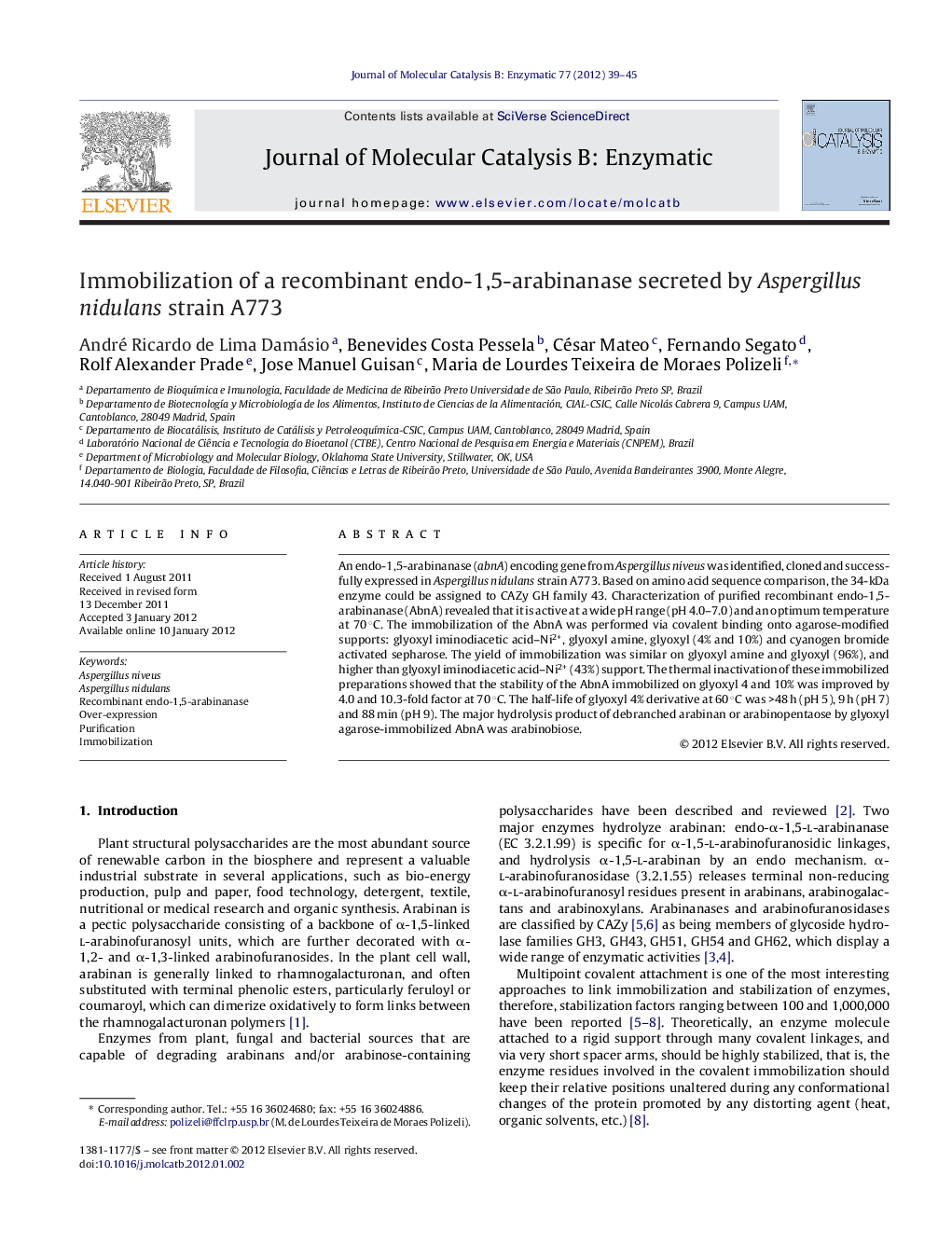| Article ID | Journal | Published Year | Pages | File Type |
|---|---|---|---|---|
| 70247 | Journal of Molecular Catalysis B: Enzymatic | 2012 | 7 Pages |
An endo-1,5-arabinanase (abnA) encoding gene from Aspergillus niveus was identified, cloned and successfully expressed in Aspergillus nidulans strain A773. Based on amino acid sequence comparison, the 34-kDa enzyme could be assigned to CAZy GH family 43. Characterization of purified recombinant endo-1,5-arabinanase (AbnA) revealed that it is active at a wide pH range (pH 4.0–7.0) and an optimum temperature at 70 °C. The immobilization of the AbnA was performed via covalent binding onto agarose-modified supports: glyoxyl iminodiacetic acid–Ni2+, glyoxyl amine, glyoxyl (4% and 10%) and cyanogen bromide activated sepharose. The yield of immobilization was similar on glyoxyl amine and glyoxyl (96%), and higher than glyoxyl iminodiacetic acid–Ni2+ (43%) support. The thermal inactivation of these immobilized preparations showed that the stability of the AbnA immobilized on glyoxyl 4 and 10% was improved by 4.0 and 10.3-fold factor at 70 °C. The half-life of glyoxyl 4% derivative at 60 °C was >48 h (pH 5), 9 h (pH 7) and 88 min (pH 9). The major hydrolysis product of debranched arabinan or arabinopentaose by glyoxyl agarose-immobilized AbnA was arabinobiose.
Graphical abstractFigure optionsDownload full-size imageDownload as PowerPoint slideHighlights► pEXPYR plasmids carrying abnA gene was transformed into A. nidulans strain A773. ► The AbnA was successfully over-secreted to culture medium by maltose induction. ► Purified recombinant AbnA was immobilized in modified agarose supports. ► 10% glyoxyl agarose derivative was 10.3-fold more stable than the free enzyme at 70 °C. ► Arabinotriose and arabinobiose were the major AbnA hydrolyses products from arabinan.
